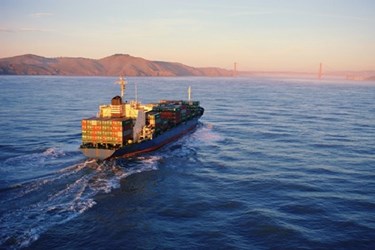Cold-Chain's Evolution: Shipping Perishables By Sea Nearly Practical
By Melissa Lind, contributing writer

Moving fresh foods and other perishables has been limited to air shipments, making international sourcing and supply less desirable due to cost. Cold-chain technology has evolved to make the longer, less-costly voyage feasible while still maintaining quality
Up until recently, suppliers of perishable foods had little choice but to ship those products by air, as a short farm-to-market timeline was essential. This system was cost-prohibitive and had limited worldwide availability of local specialties. Refrigerated containers didn’t offer many advantages as chambers were small, expensive, and difficult to maintain.
White Paper: Wireless Temp Monitoring Cuts Cost Of Loading Refrigerated Trailer Trucks
Fortunately, technology has advanced and is making sea shipments a closer reality. Refrigerated containers are now manufactured in 20- and 40-foot sizes, opening up an opportunity for food suppliers to ship fresh foods to customers on the other side of the ocean for a reasonable price. As an added benefit, shipping by sea may be up to 25 times more efficient in terms of Carbon Dioxide output.
The world-wide market is changing due to increased international travel. It is also partially due to a growing middle class in developing economies wanting more choices in their food products. Some Americans have been willing and able to buy “exotic” foods, but many have been unable to spend their hard-earned cash. Using ocean transport, rather than air travel, will allow U.S. consumers to more easily enjoy produce, such as pineapples from South America and Central Asia, avocados from South Africa and South America, or apples and lamb from New Zealand.
U.S. products can also be more easily supplied to consumers in the BRIC (Brazil, Russia, Indonesia, China) countries and the Asia Pacific rim, whose economies have allowed for the development of a middle class with more to spend. U.S. suppliers can now ship fresh foods such as citrus from Florida, California, and Texas, seafood from New England, Alaska, and the Gulf Coast, and beef from the Midwest to global customers at an affordable price.
What's The Impact Of Big Data In The Cold Chain?
The newer, larger shipping containers use advanced technology to maintain the appropriate environment. Temperature is maintained with active-injected nitrogen, making the journey possible. Humidity can be controlled with specialized gel to decrease the possibility of mold or dehydration. Ventilation is provided to decrease carbon dioxide buildup, which discolors vegetation and prevents food loss and spoilage from ethylene gas formation. Conditions can also be altered to match the requirements of specific food types.
The downside is that new technology is expensive, but as global demand increases and old equipment becomes outdated, shipping companies will likely become more willing to invest in new containers.
